Chasing the Vermilion Torii
We enter the Kii Peninsula on a mission, but arrive embarrassingly naked--socially, culturally and linguistically speaking.
by Bobs Kerstetter
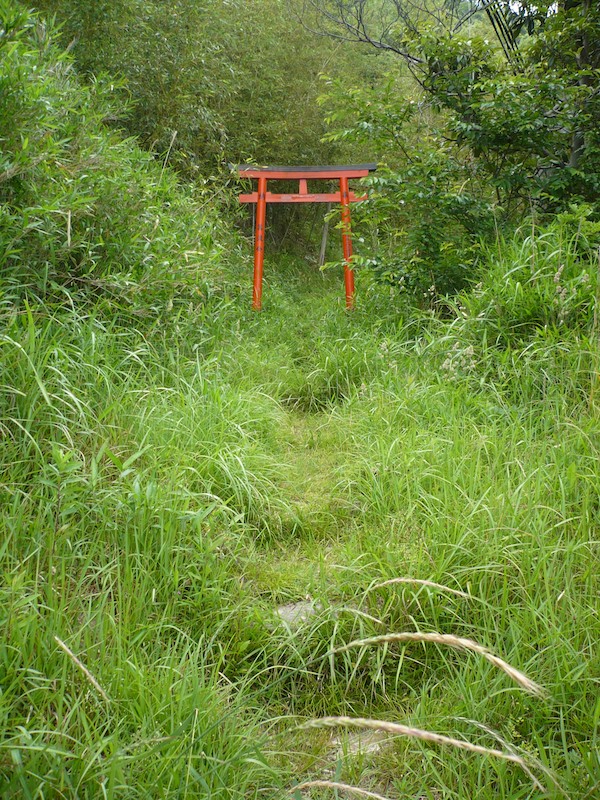
The vermilion gate sitting against a beautiful green background caught our attention.
Missing the Gate — Almost
The vermilion gate overlooking Wakaura Bay from the north snags our attention. Because it stands back from the main path, we almost miss seeing it.
The waters of Wakaura Bay paint a blue border along the southern coast of Wakayama City in the central part of western Honshu, the largest of more than 6,800 islands in Japan. Mountains rim this natural harbor on three sides. Writers, poets, photographers and travelers visit Wakaura to soak up its calm inspiration. While we know for a fact this sea water basin can roll treacherously—especially when driven by typhoon winds—today slight ripples move under gray skies.
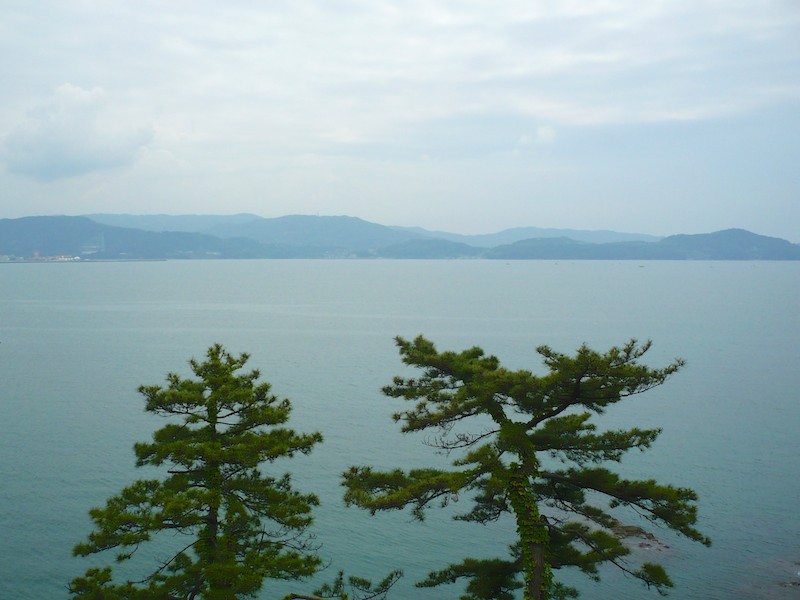
The beauty of Wakaura Bay attracts writers, poets, photographers and travelers.
Discovering a vermilion Gate
About half way up Takozushiyama—a mountain rising to the north of Wakaura—the gate glows sunset orange against a Japanese green background of bamboo, smaller grasses and miscellaneous undergrowth.
To the southwest sits a cluster of kuhi—written as くひ or 句碑 in Japanese—a handful of polished stone monuments etched with Japanese poems called haiku. They rest on earth secured against erosion by silvery gray stones, cut large and snuggly fit together by skilled hands. Tall bright grass and budding azaleas softly highlight this place of peace. A paved parking area curves between the monuments and the path leading to the gate. Beyond the gate the trail appears to lead—well—nowhere—disappearing into a bamboo-shrouded slope.
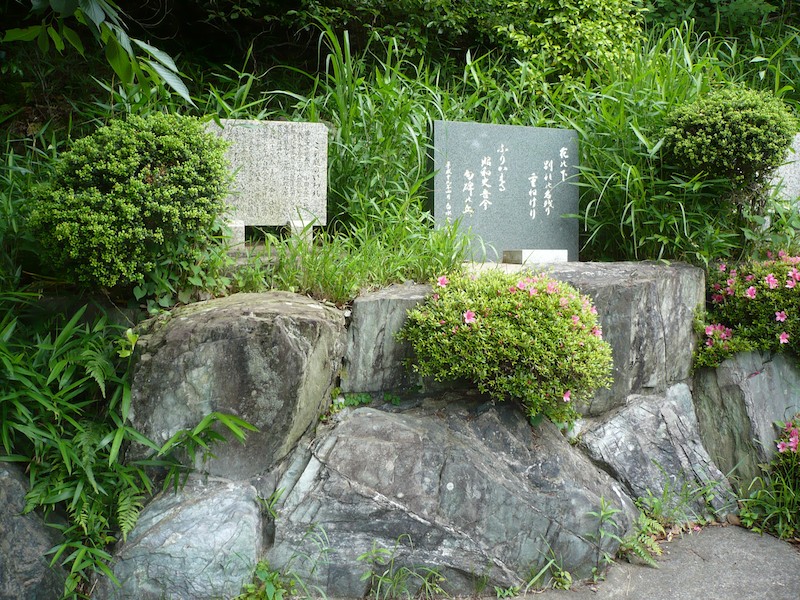
The kuhi garden contains polished gray stone monuments etched with Japanese poems called haiku.
The footpath presents a shaggy anime haircut appearance. Someone maintains the gate and its walkway in a deliberately casual sort of way. Perhaps the kuhi and entryway mark the edge of private property. Maybe a dangerous coot armed with katana blades waits to slice us into silence for discovering his secret. So…? What are we thinking here, anyway?
Reasoning Through Our Hesitancy
Just what is our problem? Why not just go and explore?
We pass through similar obstacles in the United States all the time—sometimes physical barriers, sometimes procedural hurdles. As journalists we get used to that. We learn to respect people, but work around their obstructions, going wherever the story takes us. Barricades come with the lifestyle of researching and writing. Because of this, our personal motto says, "Getting forgiveness is easier than getting permission." This approach normally works quite well. We usually plunge in. After all, perpetual curiosity indwells the hearts of journalists.
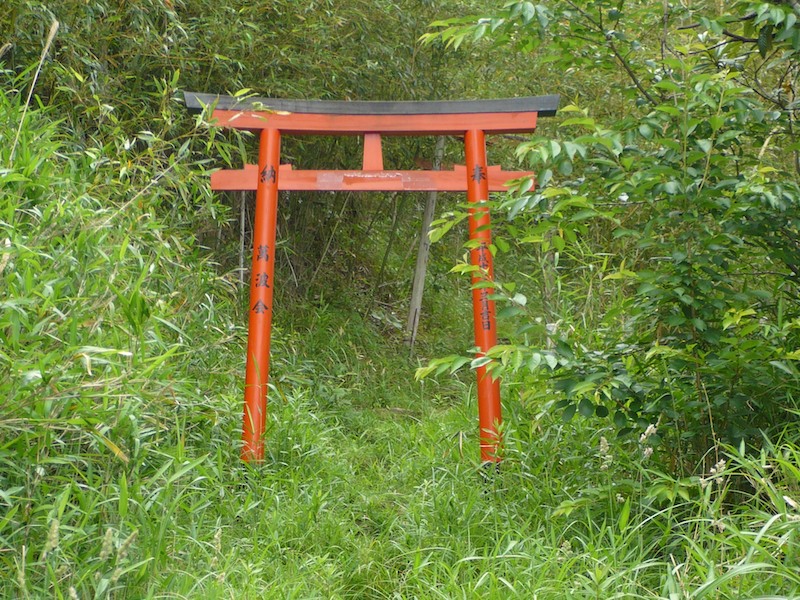
A telephoto shot shows details of the vermilion gate, but poorly represents the rough cut greenness of its environment. What was keeping us from just going through?
But this is Japan. While our inquisitiveness and somewhat arrogant attitude lives inside us, we travel here as gaikoku-jin—がいこくじん or 外国人 in Japanese, gaijin for short—walking as foreigners in this beautiful and polite land. Our bottom line? We wish not to offend. Offending in America is a favorite cultural sport. But not so in Japan.
As visitors to the place where my father learned peace from war in 1945, we shy away from offending the indigenous politeness of these kind people. We walk away from the gate. But our curiosity continues to eat at us.
Misunderstanding Our Environment
With one prior trip behind us—to Mt. Fuji, the tallest peak on these mountainous islands—we represent the worst type of uninformed American newcomer in Japan, at least in a region of Japan receiving very few Western visitors. We enter the Kii Peninsula on a mission, but arrive embarrassingly naked—socially, culturally and linguistically speaking. We also totally misestimate the amount of time we need to spend here.
On that first trip—to Fuji-san—we roam a bit west of Tokyo, staying within 100 kilometers of the largest city on earth. Many signs in the Tokyo sphere of influence read in Japanese plus English. Mass transit announces stops in both languages. A year later we discover the limited reach of such accommodations.
Now, heading toward Wakayama City from Osaka City—the other large English-friendly metropolis in Japan—we leave behind bilingual everything—signs, announcements, people. We become strangers in a strange land. All maps read in Kanji and Hiragana, with a bit of Katakana thrown in for the sake of extra chaos. All train announcements erupt into gibberish. All stations now look alike. How do we recognize the Wakayama stop?
Using sign language and visual expressions of confusion, we explain our dilemma to the conductor. Patiently, politely and slightly amused, he points to the timetable, mimics the same time on his pocket watch and signals toward the door. The message becomes very clear. Trains in Japan run on time. Exit at 16:03—the scheduled arrival time—and step into Wakayama Station. He arrives at our seats at 16:02 to make sure we know to get off. He smiles and bows when he sees us standing by the door. He represents the first ripple of the coming wave of extreme care and politeness.
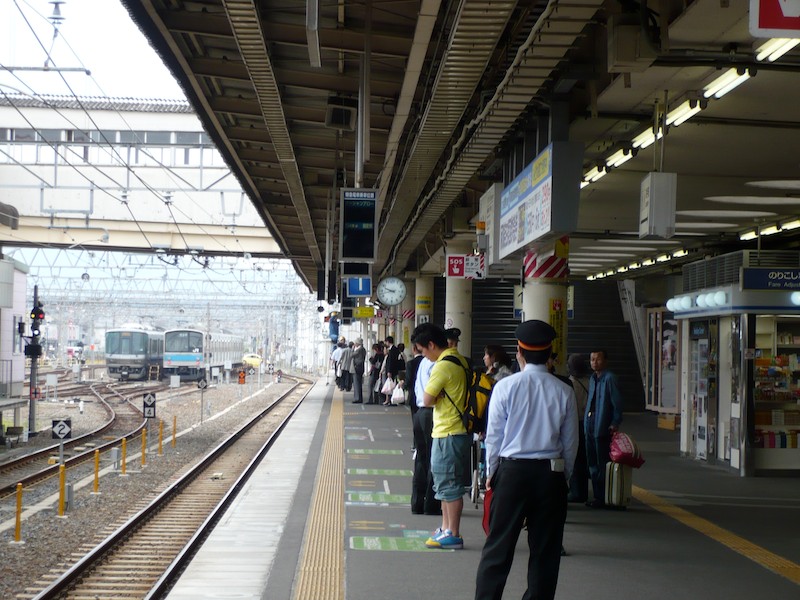
All stations now look alike. How do we recognize the Wakayama stop?
Drowning in a Wave of Japanese Care and Politeness
The young female station concierge—seldom seeing Western visitors—soon recognizes our limited communication skills. Running—literally running in small steps appropriate for her attire—she flits between us and several of her peers, collecting information, picking up maps, finding pens—striving to direct us to the correct bus for our hotel. Too much effort? Well, most people arriving at Wakayama Station know where they are going. Our arrival creates a challenge—an opportunity for service.
On each return she deeply bows multiple times—apologizing for not speaking our language. We feel sorry for her and embarrassed for ourselves, thinking, "We show up unable to speak Japanese and yet the apologies come from you." We stand like dazed fools, unable to help, unknowing how to respond. In any case, her work eventually results in success. With personally annotated map in hand, we make our way to the bus stop outside the station. This type of civility typifies this journey into mostly-Japanese Japan.
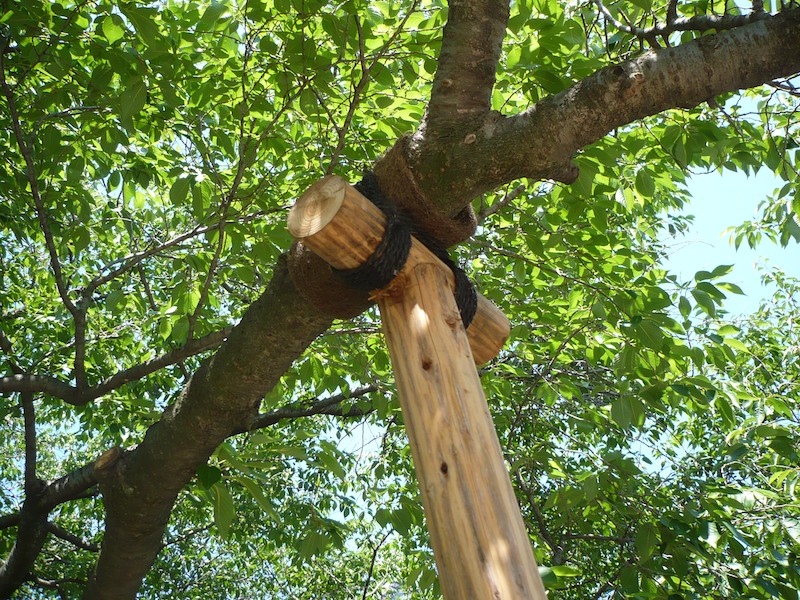
Like weak, overextended branches, we receive patient, polite support from people in a part of Japan less accustomed to Western visitors.
The front desk man at the hotel wants to talk about the American TV show Raw Hide—apparently we look the correct age. He is young. He teaches us how to do coin-operated laundry in Japanese.
The information woman at the Wakayama Prefecture Museum waives the entrance fee. She bounces up to check on us every 10 or so minutes. She wants to make sure the audio interpretation devices still work. The batteries on the English language versions seldom get charged. She swaps the devices out three or four times because of dead batteries.
The curator at the Wakayama City museum visits with us in his office for several hours. We talk about the burning of Wakayama City by B-29 incendiary bombs during the Pacific War. We discuss the stone walls, the locations of old buildings, the meaning of bridges on pilgrimage trails, the September 1945 typhoon and the American sailors who came ashore after the war. He uses an electronic dictionary, but his English improves the more we talk. He is my age and stands about two inches taller than me—unusual height for a Japanese man.
We receive courtesy from bus drivers, shop owners and even a chef who sees us from his kitchen and races out to warn us about the mouth burning wasabi served with the soba.
Finally, we meet Rie, the tourist department worker responsible for helping foreign visitors. She lived in America for three years and speaks English well. Before this trip we correspond some. She researches and answers questions. In person, Rie zips around lightly, like the other Japanese we meet—speeding to be of service. She points us to resources and helps us understand Japanese practices. We meet her before visiting Wakaura Bay. The next morning we head back to America. We so underestimated to time we need here. We can find no free moment to ask her about the vermilion gate.
Returning to the vermilion Gate
Eighteen months pass. For our return trip we study the Japanese language and research the history of Wakayama City and the Kii Peninsula. Shinto becomes an interest. We learn about military activities in 1942-1943 to protect Wakaura Bay from invasion. The guns were designed to sit on Nagusayama, above Kimiidera Temple, a Buddhist place of worship.
We correspond with Rie a few months before our planned return to Wakayama. She says the Japanese call this type of gate torii. They mark the presence of Shinto shrines. Exploring the path beyond the vermilion torii is okay.
What is obvious to Japanese people, opens wide doors for us. Rie says shrines almost always welcome visitors, as does this one. The path beyond this gate runs narrow and rocky. Walk carelessly and you can twist your ankle. Another question asks her about hiking Nagusayama. That, too, is open to the public.
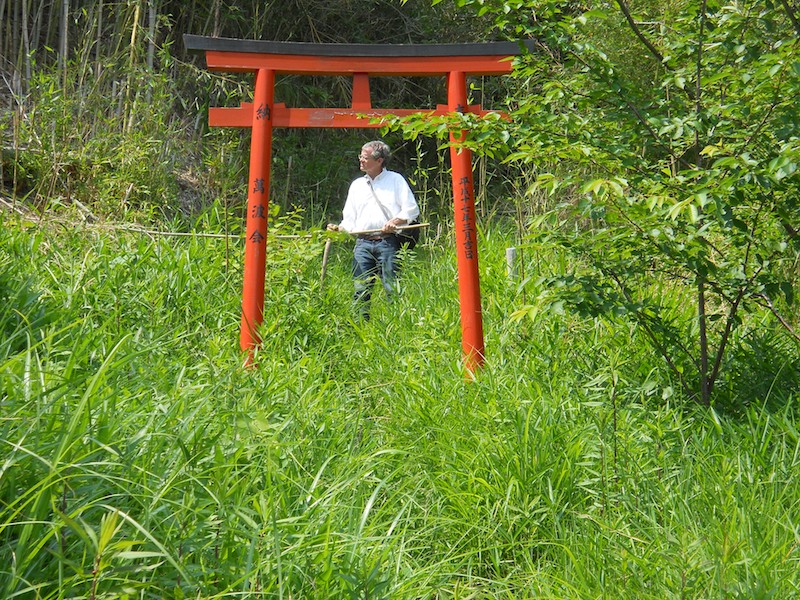
Thick with undergrowth and overgrowth the path leads over loose dirt and rocks up the mountainside.
In June 2012 I hike the trail alone. Nancy waits by the kuhi. Thick with undergrowth and overgrowth the path leads over lose dirt and rocks to a flattened space cut from the mountainside. A heavy green carpet of sasa—short leafy bamboo grass—darkens the earth. Thick growth overhead amplifies the midday night, the darkest place ever during full sunlight, darker than mushroom hunting on a cloudy day in an Ohio woodland. No one visits here. The shrine is gone. Maybe it is a tree shrine with no buildings. Those predated the arrival of Buddhism to Japan. A tad disappointed, I return to the vermilion torii thinking I am missing something.
Thinking We are Missing Something
Some sizable chucks of our hearts live in Japan. As Americans we believe the Japanese make good friends. The difficulties of our joint history bind our souls together. We want to meet Japanese people. Our current Japanese friends in Japan and here say, "Want to meet us and know us? Visit Japan when the cherry trees blossom."
We leave for Japan in late March 2013, headed toward Tokyo, Osaka, Kyoto, Yashino, Niigata, Sendai and other places known for their blossoming sukura, the Japanese name for cherry trees. We also plan a short trip to Wakayama. We hope to visit the curator at the Wakayama City Museum to deliver a small historical gift from America. The vermilion gate hardly crosses our minds, until we board the train from Osaka.
"I want to visit the shrine at Wakaura again," I say, casually. "This early in the Spring we can expect less undergrowth and fewer leaves overhead. I keep thinking we are missing something."
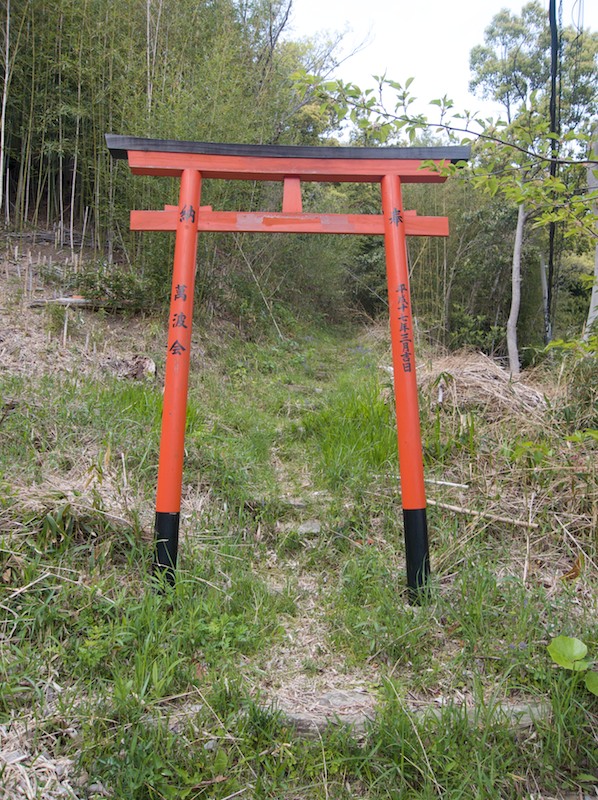
In April the greenery just begins to show, making the pathway easier to follow. Note the missing wedge near the top right section of the torii. You can barely see the color of the missing part laying in the grass behind and to the left of the righthand upright.
With our business behind us, we stand under the vermilion torii. On the ground lies a triangular piece of wood matching the torii in color, obviously fallen from its position. We wedge it back in place and start up the slope. Light fills the flattened space cut from the mountainside. The sasa stands pale and thin, waiting for its Spring uprising. A small fountain sits dry against the mountain on the far side. We look up and down, left and right. Then Nancy points to a stone fence, located back and to the left—cut stone of vertical and horizontal pieces.
We hustle along a short passage. You can see how summer growth may block the view. I am grateful for the sharp eyes of my friend.
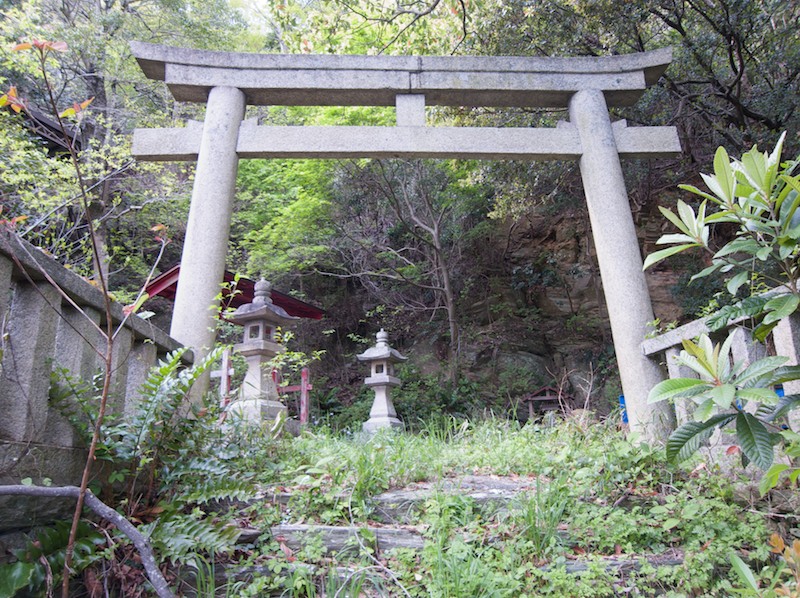
A stone torii rises up and leads toward the place of worship.
A stone torii rises to our right. Up the steps we climb. To the left more steps lead under a covered area and up to the place of worship. A structure of poles supporting a corrugated metal roof shield the worship place from harsh weather.
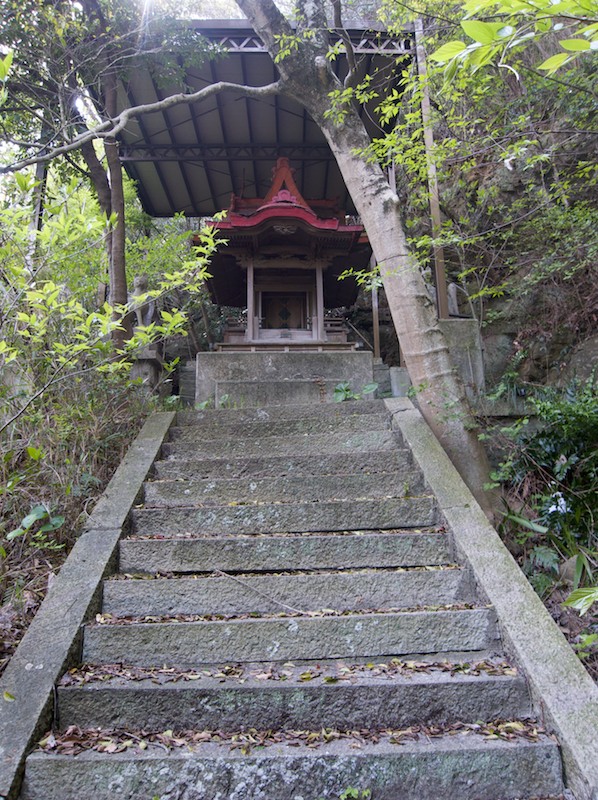
Steps lead to the place of worship. Corrugated metal roof shields the worship area from harsh weather.
A fox couple guards the way. Surveillance by foxes means the shrine honors Inari, kami of prosperity, rice, industry and commerce. The Japanese worship Inari as one of the Seven Lucky Gods. The main shrine for Inari is Fushimi Inari Taisha Shrine—伏見稲荷大社—in Kyoto.
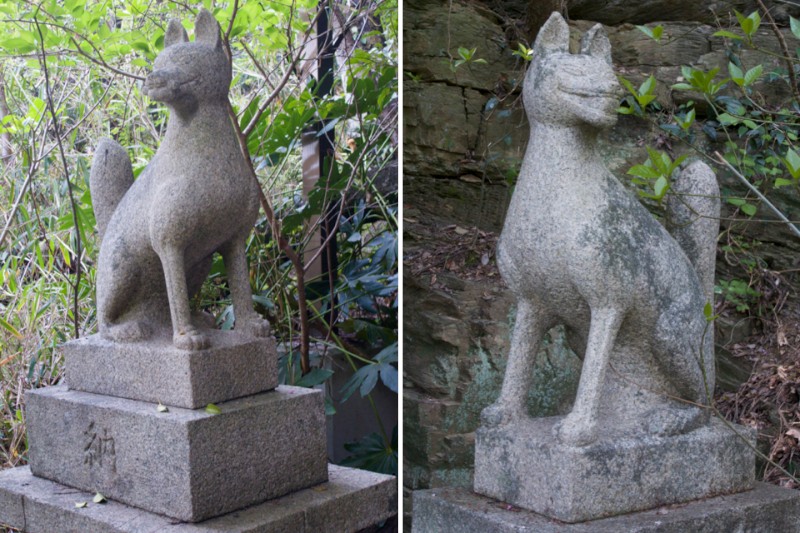
Surveillance by foxes means the shrine honors Inari, kami of prosperity, rice, industry and commerce.
Looking out from the shrine, we can see through the spring growth and torii to the blue waters of Wakaura bay. We suspect few people today remember this shrine, cut into the side of Takozushiyama. Most certainly few people visit it, for footprints are few. We notice some signs of repair and restoration.
The shrine no doubt stood here long before Dad visited Wakayama in September 1945. As part of his interest in Japan he kept what he called a laughing Buddha on his desk. When a Japanese friend recently examined it, he said, "This is not Buddha, it is Hotei." Another of the Seven Lucky Gods, Hotei, although poor in material goods, walks with contentment and happiness, or so the stories say.
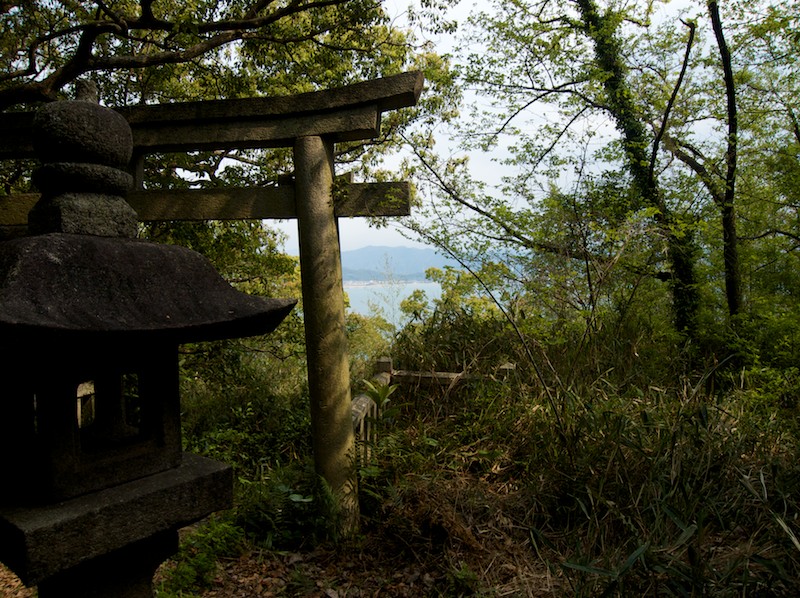
Looking out from the shrine, we see through the spring growth and stone torii to the blue waters of Wakaura bay.